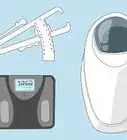This article was co-authored by Souad Gharib and by wikiHow staff writer, Sophia Latorre. Souad Gharib is the Founder of Female Trainer, a boutique women's gym based in West London, United Kingdom. Souad specializes in helping women reach their goals through exercise, nutrition, and counseling. Female Trainer offers personalized training sessions delivered by Souad and her experienced team of female trainers.
There are 7 references cited in this article, which can be found at the bottom of the page.
This article has been viewed 65,997 times.
If you want or need to know your weight, you can measure it using a scale. There are several types of scales, including digital scales, dial or analog scales, and balance beam scales, like the kind used in many doctor's offices. To weigh yourself using a digital or dial scale, place the scale on a flat surface and step onto it. Then, simply read the numbers to find out how much you weigh. Alternatively, if using a balance beam scale, step on the scale, adjust the weights, and add up the numbers.
Steps
Using a Scale
-
1Place your scale on a flat surface. Choose a flat, hard surface to place your scale, such as a linoleum or hardwood floor. Avoid placing it on uneven or bumpy tiles, rugs, or carpet.[1]
-
2Step onto the scale. Stand still on the scale with both feet even and flat. Don’t touch or hold on to anything, as that will affect the weight displayed by the scale.[2]
- If you’re using a programmable scale that measures your Body Mass Index (BMI), you need to weigh yourself with bare feet. You should also input your height, age, and gender to get the most accurate reading. Follow the instructions included with the scale to determine how to do this.
- If you're using a balance scale, slide all the weights on the horizontal rail over to the left after you stand on the scale.
Advertisement -
3Adjust the sliding weights, if using a balance scale. Move the large weight on the bottom bar over to the right, one notch at a time. Stop when the arrow on the right end of the balance beam begins to dip downward — when it does, move the large weight back one notch. Then, move the small weight on the top bar over to the right, one notch at a time, until the arrow is as level as possible.[3]
- Moving the weights to the left will cause the arrow to rise, rather than dip.
-
4Read the number. A digital scale will tell you exactly how much you weigh in pounds or kilograms, depending on what it is set to. A dial scale will point to a numbered mark, or a space in between two marks, to show you how much you weigh.
- A balance beam scale can be read by adding the top number (from the top bar with the small sliding weight, indicated by an opening or an arrow, such as 7 or 32) with the bottom number (from the bottom bar with the large sliding weight, indicated by an opening or an arrow, such as 50 or 100) when the scale is balanced.[4]
-
5Step off the scale. Take care not to jump on or off the platform, as this can damage the scale. Simply step off the scale, slowly, one foot at a time. If you are using a balance beam scale, move the weights all the way back to the leftmost starting position.[5]
-
6Record the number if desired. If you are tracking your weight, record the number in a journal or on a piece of graph paper. Graphing your weight will help you see overall trends and changes in your weight and also provides a visual aid of your progress.[6]
Tracking Your Weight
-
1Weigh yourself on the same day of the week. If you plan to keep track of your weight, weigh yourself once per week on the same day each time, like every Monday. This will help you get the most accurate picture of whether you are losing or gaining weight.[7]
- Avoid weighing yourself every day, especially if it negatively impacts your mood. Stick to weighing yourself once a week to get the best sense of your progress.
-
2
-
3Wear the same clothes. If you weigh yourself in a full suit one day and a Speedo the next, you may get very different results. Aim to wear the same clothes, or the same type of clothes (e.g., exercise shorts and a t-shirt), each time you weigh yourself.[12]
- You can also weigh yourself naked, if preferred.
-
4Use the same scale. If you are tracking your weight, you need to use the same scale every time. Different scales will give you different readings, especially if you switch between a digital scale and an analog or dial scale.[13]
-
5Record your weight each time. Though you may be tempted to skip recording your weight if it’s higher than you expected, you should avoid the urge and record your weight. To get an accurate picture and assessment of your progress, you need to be honest and accountable.[14]
Expert Q&A
-
QuestionWhat day is best time of day to weigh yourself?
 Souad GharibSouad Gharib is the Founder of Female Trainer, a boutique women's gym based in West London, United Kingdom. Souad specializes in helping women reach their goals through exercise, nutrition, and counseling. Female Trainer offers personalized training sessions delivered by Souad and her experienced team of female trainers.
Souad GharibSouad Gharib is the Founder of Female Trainer, a boutique women's gym based in West London, United Kingdom. Souad specializes in helping women reach their goals through exercise, nutrition, and counseling. Female Trainer offers personalized training sessions delivered by Souad and her experienced team of female trainers.
Exercise & Wellness Specialist Weigh yourself in the morning after you've gone to the toilet but before you eat or drink anything.
Weigh yourself in the morning after you've gone to the toilet but before you eat or drink anything.
References
- ↑ http://www.webmd.com/diet/features/weighing-in-on-scales-find-your-true-weight#1
- ↑ https://www.consumerreports.org/scales/the-best-time-to-weigh-yourself/
- ↑ http://sciencing.com/learn-read-physician-scale-4472038.html
- ↑ http://sciencing.com/learn-read-physician-scale-4472038.html
- ↑ http://sciencing.com/learn-read-physician-scale-4472038.html
- ↑ http://scoobysworkshop.com/how-to-weigh-yourself-accurately/
- ↑ http://www.webmd.com/diet/features/weighing-in-on-scales-find-your-true-weight#1
- ↑ Souad Gharib. Exercise & Wellness Specialist. Expert Interview. 8 June 2021.
- ↑ http://www.webmd.com/diet/features/weighing-in-on-scales-find-your-true-weight#1
- ↑ Souad Gharib. Exercise & Wellness Specialist. Expert Interview. 8 June 2021.
- ↑ Souad Gharib. Exercise & Wellness Specialist. Expert Interview. 8 June 2021.
- ↑ http://www.webmd.com/diet/features/weighing-in-on-scales-find-your-true-weight#1
- ↑ http://www.webmd.com/diet/features/weighing-in-on-scales-find-your-true-weight#1
- ↑ http://scoobysworkshop.com/how-to-weigh-yourself-accurately/
- ↑ http://www.vegkitchen.com/product-guide/why-you-should-weigh-yourself-every-day-and-why-a-digital-scale-is-best/
- ↑ http://discovergoodnutrition.com/2014/12/accurately-weigh-yourself/
About This Article
Weighing yourself is fairly easy if you have an accurate scale. Make sure to place your scale on a flat surface so it can read properly. It's best to weigh yourself at the same time each day since your weight can fluctuate throughout the day. You'll also want to wear the same clothes or weigh yourself in the nude so the weight of your clothes doesn't affect the number. When you step on the scale, stand with your feet flat for several seconds until the numbers stop changing. This is the number to record. To learn how to use different types of scales, read on!
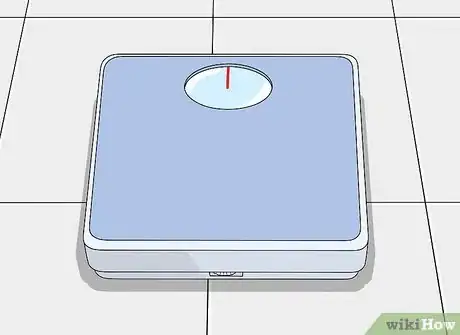
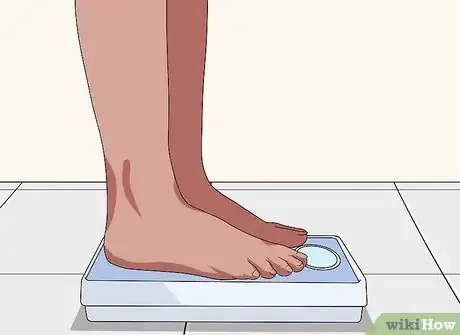
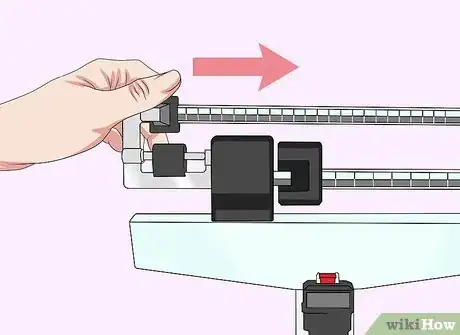
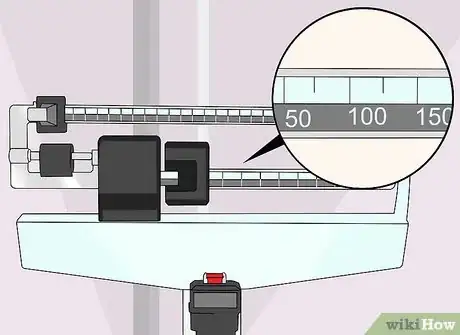
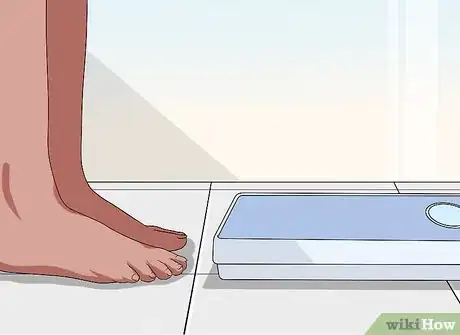
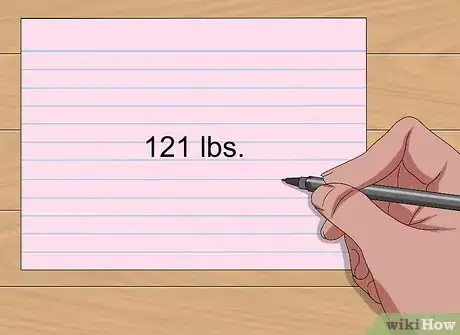

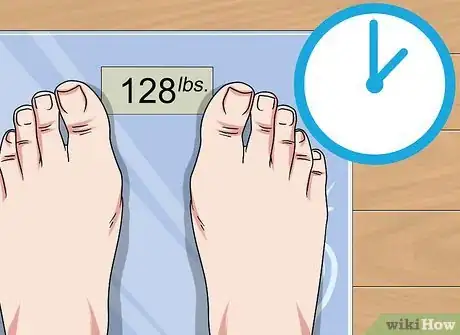



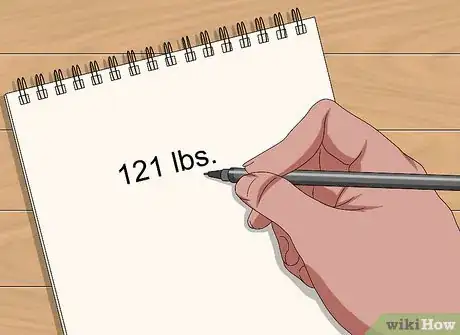
-Step-14-Version-3.webp)


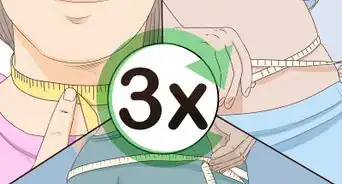
















-Step-14-Version-3.webp)
